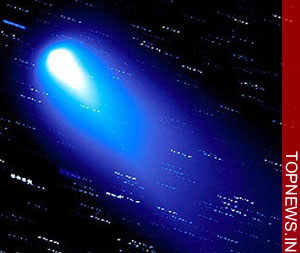Comet smashes triggered “dry fog” that caused famine 1,500 years ago
 London, Jan 8: A team of scientists has found evidence that multiple comet impacts around 1,500 years ago triggered a "dry fog" that plunged half the world into famine.
London, Jan 8: A team of scientists has found evidence that multiple comet impacts around 1,500 years ago triggered a "dry fog" that plunged half the world into famine.
Historical records indicate that from the beginning of March 536 AD, a fog of dust blanketed the atmosphere for 18 months.
During this time, "the sun gave no more light than the moon", global temperatures plummeted and crops failed, according to Dallas Abbott of Columbia University's Lamont-Doherty Earth Observatory in New York.
The cause has long been unknown, but theories have included a vast volcanic eruption or an impact from space.
Now, according to a report in New Scientist, Abbott and her team have found the first direct evidence that multiple comet impacts caused the haze.
They found tiny balls of condensed rock vapour or "spherules" in debris inside Greenland ice cores dating back to early 536 AD.
Though the spherules' chemistry suggests they did not belong to an impactor, they do point to terrestrial debris ejected into the atmosphere by an impact event.
"This is the first concrete geological evidence for an impact at 536 AD," said Abbott.
The fallout material was also laid down over several years, and some layers were particularly densely deposited.
This suggests more than one impactor was involved - probably a comet, because they tend to fragment on their way to Earth.
Abbott and her team have identified two possible underwater craters whose age ranges fit the global dimming event.
The first appears to have formed when an object roughly 640 metres wide slammed into the Gulf of Carpentaria in Australia, and the other when a smaller object crashed into the North Sea near Norway.
Marine microfossils found with the impact spherules are also consistent with an ocean impact. "There's clearly stuff that has been transported a long distance," said Abbott. (ANI)